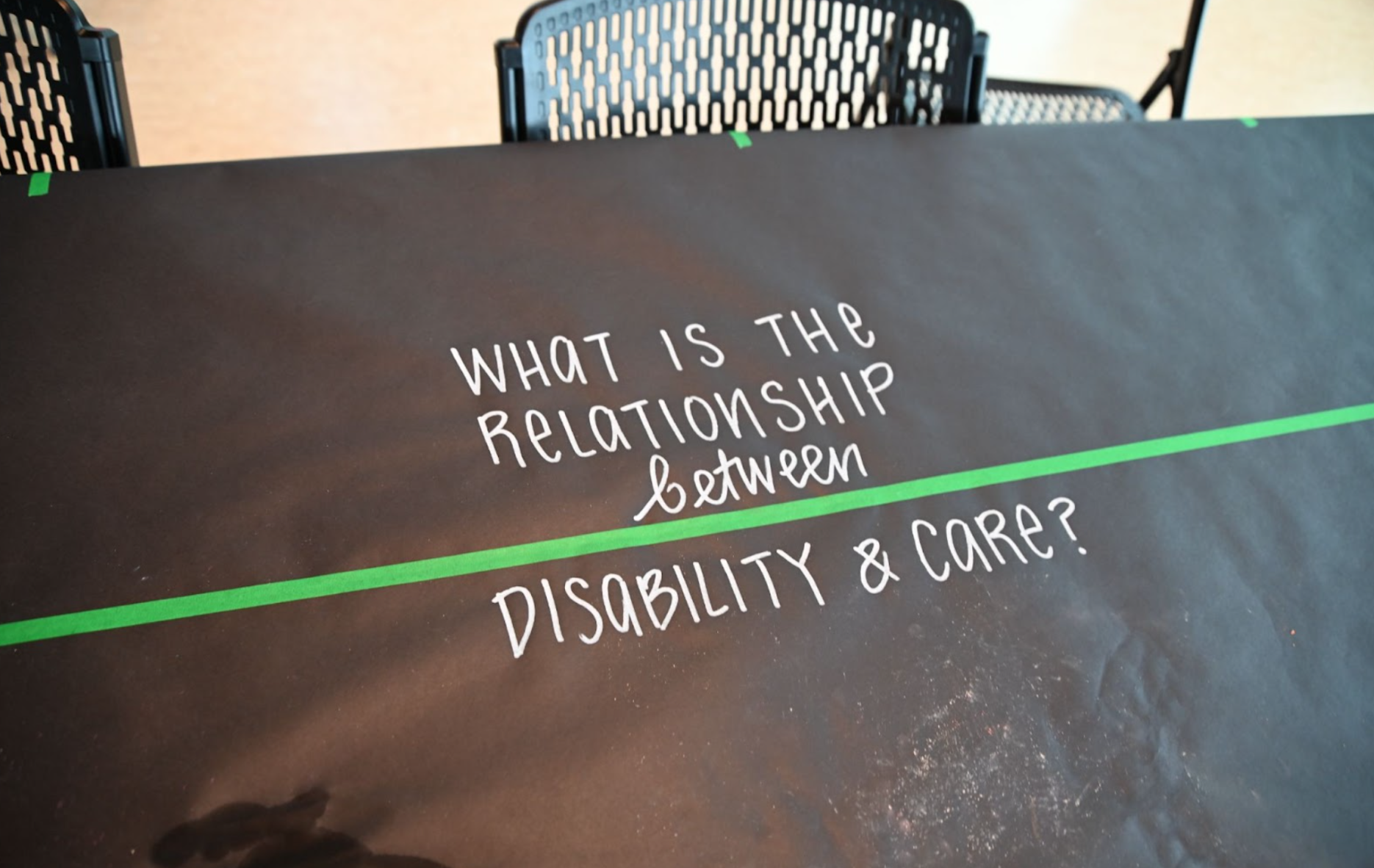Taking Care
What is care? How do we actively shape our relationship to each other and what form does it take? Is it a shape, sound, colour, feeling? Can it be something we can cultivate and make more space for - among strangers, acquaintances, friends, maybe even across lines of difference? How do we give and receive care? How does disability relate to caring? What is the role of formal and informal forms of caregiving? How do we host a space that acknowledges the often undervalued gestures of care embedded in the everyday?



As a non-profit working with folks with developmental disabilities, we play a key role in the care people give and receive, and have the potential to shape what meaningful caregiving looks like. But first we had to understand it from the perspective of those giving and receiving it. Aaniya Asrani and Josiane Spyker set out to answer some of these questions by interviewing 5 pairs of caregivers/receivers in the context of posAbilities.
They then had the opportunity to give form to these stories, and share them back with the community and invite other members from the public to come share their stories of care at Connect Fest, hosted at the Shadbolt Centre for the Arts on Sunday, April 28th 2024. This took the form of a community collage that unfolded throughout the day.
Care is in small everyday acts. In cooking lunch and special treats.
Baking pans greased and dotted with a smiley face.
Care is to be seen, to be acknowledged properly.
It’s in moments when he says “welcome home,” “goodnight” and “I love you.”
“You learn to recognise when people need help. We are all human, and have our differences. We should be accepted no matter what. I think we shouldn’t be so critical and judgemental of others. It’s important to realise that your one doing could put them over the edge or change their life.”






















“Caring is like seeing myself in another person. I am one person but also two people, because I’m thinking about the other person and being in his shoes, trying to understand what he needs, what he wants.
There are times he doesn't communicate with me directly. But I try to like to read his body language. You see the stuff that he cannot express verbally but wants/needs, and you learn to understand him through his mannerisms. I try to understand his nonverbal communications, so that I can help him better.
The role you play makes you feel good about yourself, because you help somebody and you like helping somebody. It’s fulfilling, it's not just a job. It hits you at the core, when you care for somebody and at the same time, you get something from it.”
Adrianna Contreras did a live graphic recording of conversations that were unfolding in the space.




“He used to have troubles in the local malls because he used to collect pop cans - his mother got him on to that to give him something to do because sometimes it's hard to find a hobby or work because of his disability, and since his communication skills are not that great, she thought that the collecting pop cans would be good.
He got carried away with that and was getting pop cans from places he wasn't allowed to, and taking them from the malls which isn’t allowed. He would get on buses with dripping bags or pop cans and so he would get some negative press.
Sometimes people see him and they don't understand or they judge him in the wrong way, because they don't know what he's all about, and what kind of a person he is. I think they need to just put their judgments aside and just get to know him a little better, and they'll see that he's a really great, nice guy.”
Josiane Spyker wrote a poem in response to all of the stories collected in this process.







“For me caregiving is so enmeshed in my life, because we have family bonds it’s not something I think about as separate from life. It’s my life. It has always been my philosophy, to be respectful and honest by being in the moment with each other, and not trying to rush out of that moment. Care giving is more than just washing and cooking and cleaning. It’s a choice that’s freely taken, it’s a choice to be fulfilled in it, it’s a choice to make it flourish. Caregiving can be drudgery, but you just need to look for the fun. If you find the joy and laughter everyday, it just weaves a cloth that is tighter and tighter, making your lives deeper and deeper.”
Aaniya Asrani responded to the stories told by making drawings out of oil pastel, dry pastel and colour pencil.










“He's been doing piano lessons for eight and a half years. He has a wonderful teacher, and she's got two little boys. So yesterday the seven year old was there, and he had a loose tooth which was really bothering him. He was very upset and distraught, and so she had to pull the tooth out. And then it bled and he really screamed. Christopher was plugging his ears. And so she asked him if he could play some calming music on the piano. And he did. And then the little boy sat on her lap, and they did some breathing, and he calmed down. She was just really impressed and pleased, because it was very disruptive, obviously, to the piano lesson. But it was also an illustration of how music can have a therapeutic effect, and a demonstration of Christopher's care.”
Community members and self advocates added their stories to the big collage!






